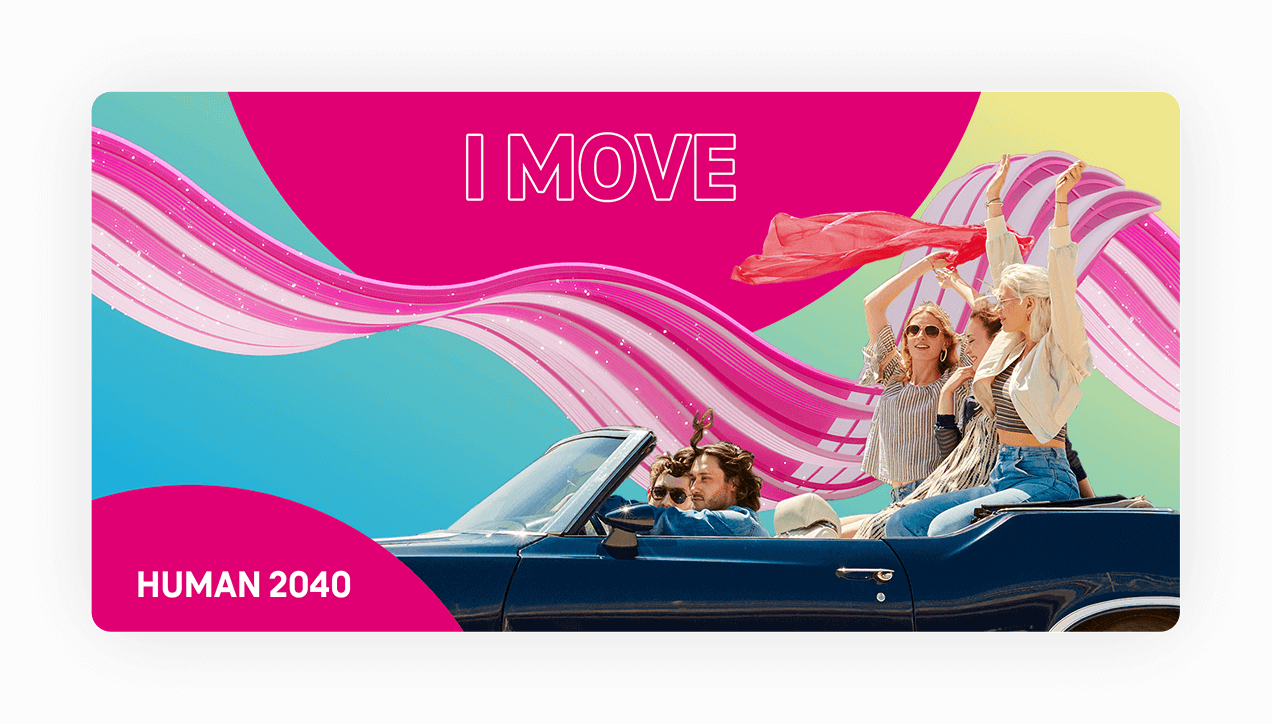In the first episode of the "Human 2040" series, we focus on transport issues in a broad sense. In order to create a reliable picture of mobility in 2040, the analysts from Polityka Insight look into trends such as the systematic development of greener transport and its intermodality. Andrzej Bobiński, managing director of Polityka Insight, talks to Krzysztof Bolesta, former Vice-President of the Foundation for the Promotion of Electric Vehicles and currently policy officer and team leader at the European Commission's Directorate-General for Energy, about whether the presented vision of mobility in 2040 has a chance of becoming reality. We invite you to read the text and listen to the interview.

WHO IS RESPONSIBLE FOR THE ACCIDENT OF AUTONOMOUS VEHICLES
After three years of a legal battle between the participants of the collision , car manufacturers and software developers, we will learn who is to blame. The Supreme Court is going to announce its judgment.
Starting point: The collision took place in Warsaw at night at the intersection of Wawelska and Grójecka streets, where the traffic is managed by the Warsaw Intelligent Autonomous Vehicle Management System (WSIKPA). For unknown reasons, the system allowed two autonomous vehicles into the intersection at the same time. The collision resulted in the death of the Edison 8S passenger – an activist and the founder of the #CzystyCzłowiek virtual community which opposes bionic modifications of humans. The female passenger of Izera X-Sport was admitted to a hospital in a serious condition. The woman tried to switch the vehicle to emergency manual mode, but the vehicle’s system blocked this option because it detected alcohol in her blood.
Fault of the city traffic management system manufacturer (high probability): This was the case in lower courts. The WSIKPA algorithms are supposed to navigate autonomous vehicles in the city in a collision-free manner. Although the system is supervised by a human factor (a special unit in the Warsaw Town Hall), the controller is unable to react on a case-by-case basis and correct decisions taken by a machine. Therefore, the controller is definitely not to blame in this case.
Fault of the vehicle manufacturer (medium probability): One of the elements of the WSIKPA authors’ defense was the indication that Edison 8S software was not updated to the latest version, which could affect compatibility with the city system. In previous instances, the representatives of the car company effectively demonstrated that the missing update only covered the extension of the functionalities of the vehicle’s entertainment panel and did not affect the autonomous steering system.
Fault of the vehicle owner (low probability): If the Supreme Court shares the views of WSIKPA and considers that the failure to update the system in Edison 8S has contributed to the accident, it is possible that the vehicle owner will be to blame instead of the manufacturer. Although Edison software generally updates itself, the long-term lease agreement stipulates that the lessor is responsible for verifying on a regular basis that the vehicle has the most recent version of the system.
Hackers (low probability): The largest controversy is the issue of possible intrusion to the system by hackers who were supposed to intentionally lead to an accident, which was raised by WSIKPA. So far, the representatives of the system authors have not provided any convincing evidence in this respect. However, this theory is gaining popularity among the #CzystyCzłowiek community, whose members claim that the accident was a “murder in velvet gloves”. If the Supreme Court considers that a cyberattack has occurred, the case will probably be dismissed.
FAST AND GREEN JOURNEY THROUGH POLAND
We have travelled from the Czech-Polish border in Golińsk (Lower Silesia Province) to Sejny at the border with Lithuania. The journey across Poland has never been this fast, easy and environmentally friendly.
The entire route was scheduled by the Virtual Travel Assistant (WAP) supported by Ciri. Our task was only to indicate the origin and destination as well as the date of the journey. Based on the data of almost all Polish public transport carriers and our preferences (the smallest carbon footprint possible, the shortest travel time), WAP selected optimum connections and purchased one combined ticket. The assistant was also helpful during changes – it flawlessly marked the places to be reached to start the next stage of our journey.
We started with a 30-kilometre journey by an electric city bus from the Czech border to Wałbrzych, a city located on the outskirts of the Wrocław-Świdnica mega-agglomeration. An electric Vozilla (as part of car sharing) in which we have reached Wroclaw was already waiting for us at the bus station. There, we changed to the super-fast Hyperloop railway. The “wagon” which moves in a special tube covers almost 350 kilometres from Wrocław to Warsaw in 37 minutes. We travelled from the capital by a “traditional” train as far as to Suwałki, where the most pleasant part of the journey was to start. We covered the last 30 km of the route from Suwałki to Sejny, which runs through the Suwałki Landscape Park that is closed for motor traffic, by electric bicycles. Our luggage travelled in a small autonomous e-trolley.
Our multimodal journey was possible thanks to the renaissance of public and shared transport which can be observed since the second half of the 2020’s. Its success resulted primarily from ecological reasons (elimination of combustion cars from the streets) and changes in consumer habits (departure from car ownership to more flexible solutions). During the entire journey, we managed to avoid combustion vehicles. Thanks to the significant departure from fossil fuels in the power industry, also those stages of the journey which were based on electric transport were much more environmentally friendly than 20 years ago.
TRANS-POL-TTONI PUTS ITS BETS ON HYDROGEN
One of the largest logistics companies in Poland decided to replace its entire car fleet with hydrogen-powered trucks. The change is in line with the company’s environmental zero-emission strategy
At the first stage that was carried out at the beginning of the 2030s, the company accelerated the replacement of its fleet with electric vehicles. However, electric vehicles were not able to replace vehicles using fossil fuels, especially at longer distances. Trucks using hydrogen-powered fuel cells (FCEVs – Fuel Cell Electric Vehicles), which have been improved in recent years, are a response to this problem.
Hydrogen-powered trucks do not emit any exhaust fumes; water is the only by-product of vehicle propelling reactions. The challenge faced by scientists over the past 15 years was to reduce the cost of manufacturing “green” hydrogen (obtained in the process of electrolysis powered by renewable energy) which had to supplant “blue” hydrogen (generated from gas) and “grey” hydrogen (generated from crude oil). Only then it was possible to refer to hydrogen propulsion as an environmentally friendly alternative to fossil fuels.
Supplementing the supply chain with hybrid vehicles is the final element of the changes in logistics and transport industry that took place over the last 20 years. The need to depart from fossil fuels contributed to the fact that commercial transport, especially over long distances, was largely transferred to the tracks. Autonomous trucks that travel in the form of integrated convoys became an alternative to railways. At the final stage of transport, directly to the consumer, the use of electric commercial vehicles is already widespread, and in large cities and restricted traffic zones – the use of electric cargo bicycles.


